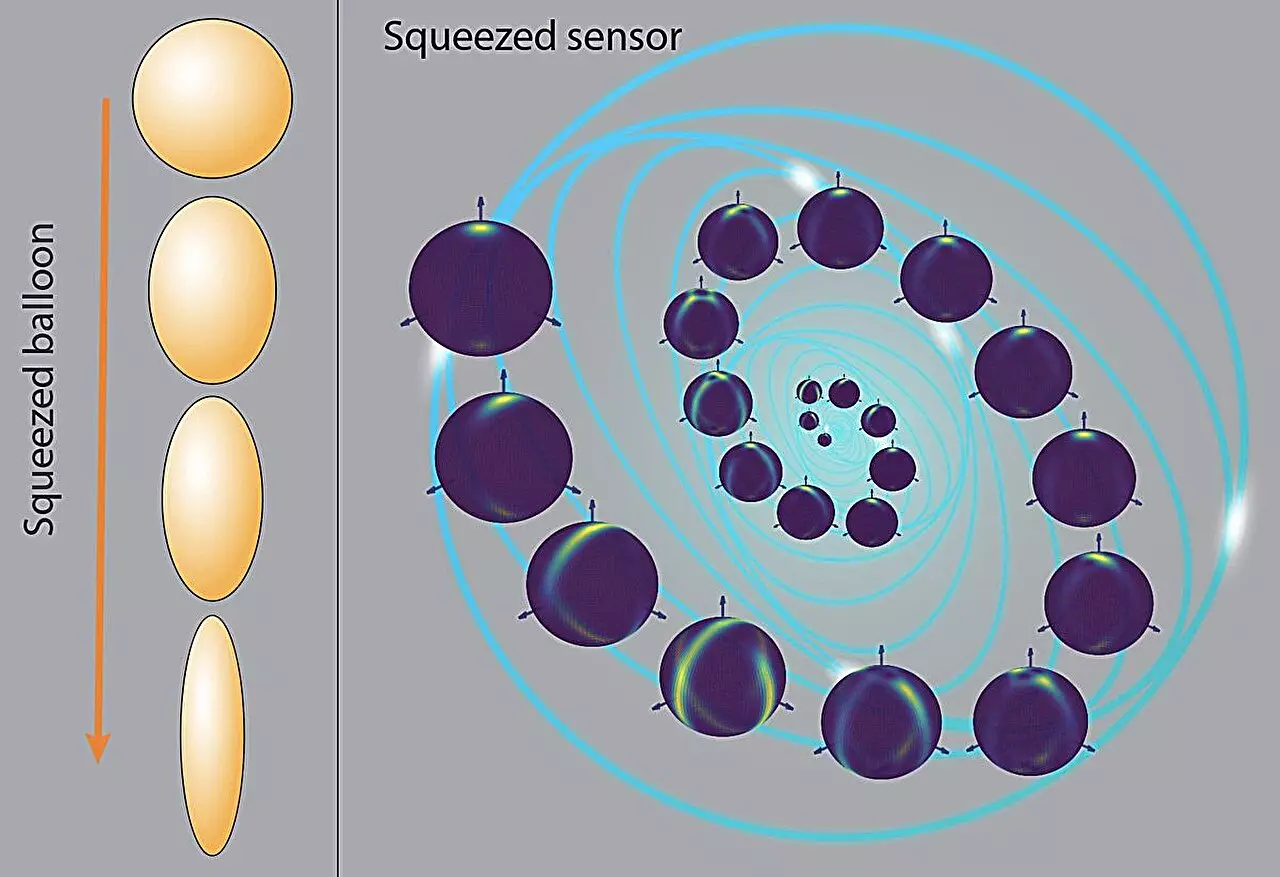Quantum squeezing represents a fascinating paradigm within the realm of quantum physics, encapsulating how uncertainty in measurements can be manipulated. At its core, the principle of quantum squeezing asserts that while the uncertainty associated with one observable quantity can be minimized, an increase in uncertainty for a related quantity is inevitable. This duality is analogous to an inflated balloon. When squeezed from one side, the balloon gains a more elongated shape while losing its spherical symmetry. In a quantum setting, this means that while one parameter—perhaps position—can be scrutinized with significantly enhanced precision, the complementary parameter—such as momentum—becomes less certain. Notably, the aggregate uncertainty maintains consistency, revealing a fundamental constraint inherent to quantum measurement techniques.
This redistribution of uncertainty is not merely a theoretical exercise; it has practical implications in improving measurement accuracy in various applications. Notably, atomic clocks have benefitted from quantum squeezing techniques, showcasing how precision can be enhanced in systems requiring stringent measurements of a single variable.
Despite the advancements brought forth by quantum squeezing, applying this concept to scenarios involving simultaneous measurements of multiple factors presents considerable difficulties. Traditional quantum mechanics operates on principles that can challenge our understanding when scaling up; the behavior observed in single-variable measurements does not seamlessly extend to multi-variable scenarios. The complexity escalates as researchers explore the potential of combining multiple measurements—such as conducting simultaneous evaluations of an object’s position and momentum.
This area remains ripe for inquiry and is a focal point in recent research efforts, specifically highlighted by the work of Dr. Le Bin Ho from Tohoku University. His study, published in Physical Review Research, dives into these intricacies to uncover how quantum squeezing might be employed to enhance measurement accuracy within quantum systems impacted by multiple interrelated factors.
Dr. Ho’s exploration concentrates on cases where a three-dimensional magnetic field interacts with an ensemble of identical two-level quantum systems. The study reveals how, under optimized conditions, measurements could achieve precision aligned with theoretical limits. Yet, it also underscores previous research shortcomings in articulating these results in practical scenarios where complete quantum entanglement was previously limited to one directional approach.
By providing both theoretical frameworks and numerical insights, Dr. Ho’s work offers a roadmap for identifying mechanisms that could potentially optimize precision in measurements across multiple parameters. His research holds promise for a deeper understanding of multi-phase quantum measurement, particularly in expanding into complex environments where conventional single-phase squeezing applications were previously deemed sufficient.
The implications of enhanced measurement precision extend across a multitude of technological domains. For instance, quantum imaging techniques stand to achieve remarkably sharper images while quantum radar systems may gain improved detection capabilities for various objects. Furthermore, atomic clocks could be refined to an even greater degree, transforming applications in global positioning systems (GPS) and time-sensitive logistical operations.
In the medical field, advancements in biophysics could lead to enhancements in magnetic resonance imaging (MRI), thereby improving diagnostic services. Clinics might incorporate more sensitive biosensors, facilitating early disease detection and treatment protocols that rely on accurate molecular and cellular measurements.
As Dr. Ho articulates, “Our findings contribute to a deeper understanding of the mechanisms behind the improvement of measurement precision in quantum sensing.” This progression not only advances scientific knowledge but also lays the foundation for the next generation of quantum technologies.
Looking ahead, Dr. Ho aims to investigate how different types of noise affect quantum squeezing and devise strategies for mitigating their impacts. The ongoing exploration of quantum principles in tandem with enhancing real-world applications signifies an exciting era in both scientific inquiry and technological innovation. As knowledge in this field expands, so too will the possibilities for transformative advances across various sectors.


Leave a Reply